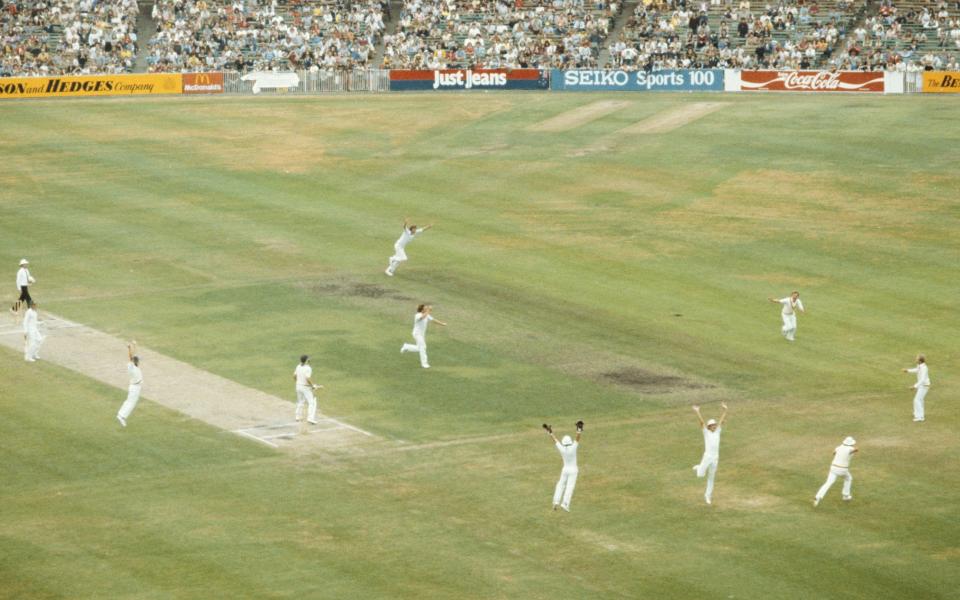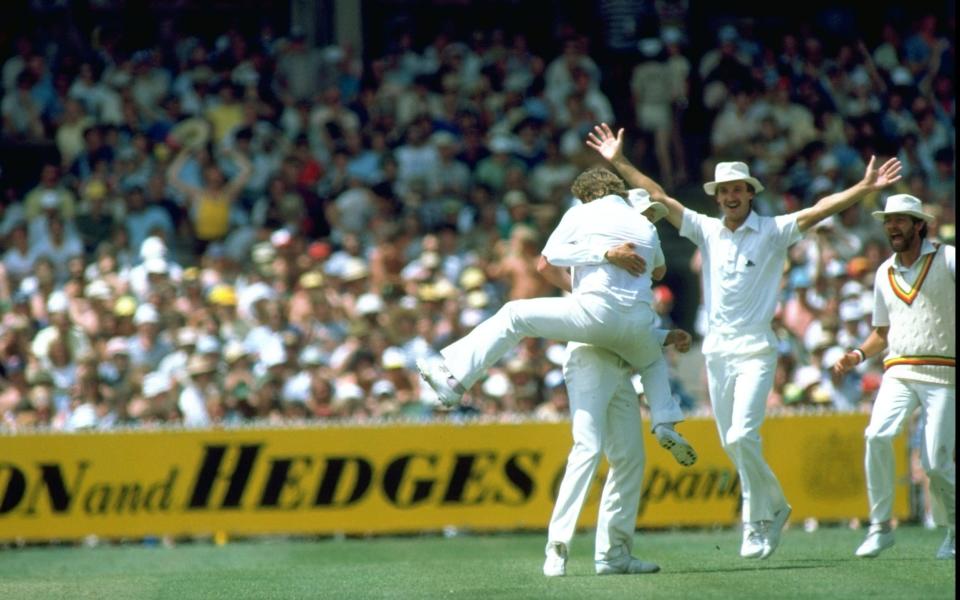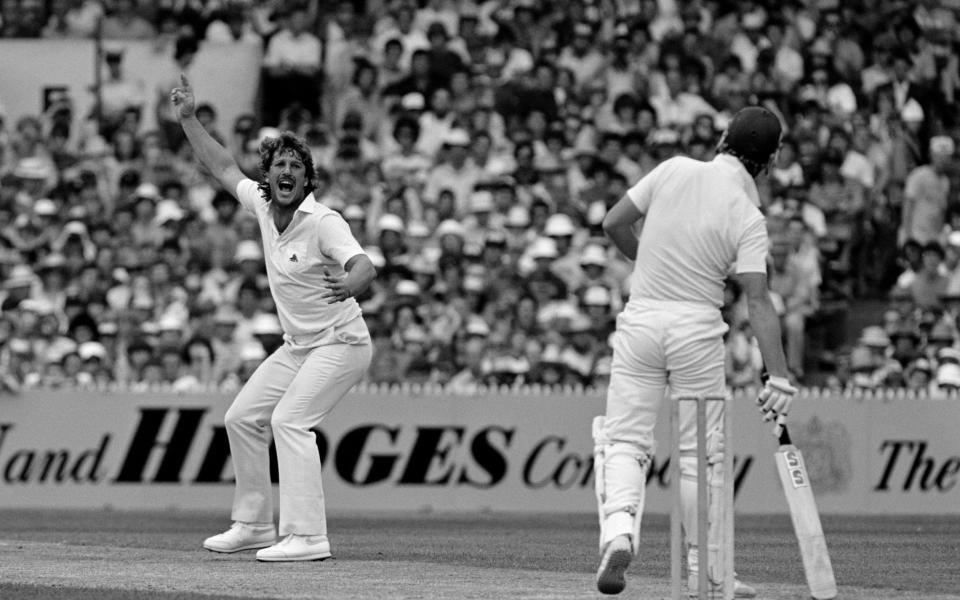Forget Ben Stokes' Headingley heroics - England's MCG win in 1982/83 is their most dramatic ever

It was, and still is England’s narrowest Test victory in terms of runs: a mere three. Twice England have beaten Australia by one wicket, most recently at Headingley in 2019, but the drama then - as Ben Stokes surged to the climax - was briefer, if more intense. At Melbourne in late December 1982 the drama drained us for more than two hours as England strove for Australia’s final wicket.
England, then as now, went to Melbourne 2-0 down. Two major differences: it was the fourth Test of the 1982-3 series, and England held the Ashes. Winning in Melbourne therefore gave England a chance to level the series in the last Test in Sydney and thereby retain the urn.
There were plenty of other differences. The England players then were on their own. No coach. No analyst. No doctor. No masseur. They had to think on their feet for themselves.
Norman Gifford hit a few catches in the morning and offered sage advice while smoking his pipe, but that was about it. No masseur was perhaps the most vital difference. In 1954-5 Len Hutton had insisted on a masseur to look after Frank Tyson and Brian Statham, but in 1982-3 there was nobody to care for the captain Bob Willis, who needed all the help his ageing knees could get; Ian Botham, basking in the glory of the 1981 Ashes; and their new fast bowler, Norman Cowans, England’s first West Indies-born bowler. “I’m a physiotherapist, not a masseur,” said Bernie Thomas, England’s physio.
But the intensity was the same, then and now. Bob Willis, who died two years ago, could not sleep for worry; he had to be filled with sleeping tablets to get through the game, and resorted to hypnotherapy in Sydney. Then, as now, millions of people in Britain too would have lost sleep as England leaked towards the line. And then, as now, the dominating factor in the series was Australia’s fast bowling superiority.
It was the tightest of Tests in one other respect. All four totals came within a span of ten runs as the match was on a knife-edge throughout. On day one England, sent in on a damp and re-laid pitch, scored 284. On day two Australia replied with 287. On day three England scored 294. On day four the pattern was not quite maintained as Australia ended it on 255 for nine, with 37 runs still to win.
The highlight of England’s first innings was their assault on Australia’s offspinner - Bruce Yardley being the Nathan Lyon of his day - which “gave me more heart than virtually anything so far on the tour,” Willis recorded in his “Captain’s Diary”. Chris Tavare, opening for England, had batted throughout the first day of this series to score 66, which ultimately secured a draw. Here, “Tav was a revelation” until England’s last five wickets collapsed (again, perhaps, then as now).
Top-scorer in England’s second innings was Graeme Fowler, who passed 50 before Jeff Thomson’s yorker broke his right ie front foot in three places. “Lord (David) Gower came out to run for me and I flapped the next ball - predictably a bouncer - to fine-leg, only it was a no-ball, so Thommo bowled another bouncer.” Fast bowlers in those days could bowl as many bouncers per over as they wanted.
No doctor being on tour, Fowler was taken to hospital by Thomas the physio - and by Derek Randall, who was not playing after being hit in the mouth by Michael Holding, representing Tasmania, in Launceston. “Arkle was pushing me in a wheelchair through the hospital like a lunatic, and he rushed for a lift as the door was shutting.” Fowler’s broken foot might have ended up on Floor 4, separately, only “the doors hit my leg so hard they re-opened again.” When Joe Root was struck amidships in Adelaide, medical attention was on hand.
Australian crowds, like their fast bowlers, were less restrained. When Botham hobbled out to bat, pretending he was pulling a ball and chain like a convict, the MCG went wild. Botham made 46. Derek Pringle weighed in with 42 until “I nicked a slower ball from Geoff Lawson, who was probably the number one bowler in the world then, and even though it was a slower ball it carried to Rod Marsh.” The bounce was becoming uneven.
England might have posted 300 if Bob Taylor had not been given out LBW for 37. Two Australian umpires are standing in this Melbourne Test, because these are covid times, but technology keeps an eye on them. Willis noted: “Bob was the subject of an extraordinary leg-before considering he was hit near the hip bone while padding up.” Wisden noted: “By now the umpiring of Rex Whitehead was becoming an irritant.”
Needing 292 to win, England were boosted when Greg Chappell, Australia’s captain, lashed a short ball from Cowans to cover where England’s reserve keeper Ian Gould, subbing for Fowler, clung on. Chappell had also targeted Cowans in his first innings, lashing a bouncer 100 yards - a six on any other ground - before being held by Allan Lamb.

The late David Hookes scored 68 but after he and Rod Marsh were out, and Australia’s last pair came together, with 74 still to win, they headed for the showers, and beers. No point watching, the game was over. As their last batsman, Allan Border, recorded in his autobiography: “When Jeff Thomson had joined me at the wicket in the final session (of day four), our right price was probably 1000-1…. My own form had been ordinary in the extreme (81 runs in five previous knocks).”
Pringle was bowling “when Thommo came in and he nicked one just short of the keeper, and I thought we’d win easily. The pitch was playing up and Cowans was making them grub.” Willis spread the field for Border, stopping boundaries but allowing him to play himself back into form, while he and Thomson knocked off 37 of the 74 they wanted to regain the Ashes.
On the fifth morning the crowd added to the tension. In most parts of the world, with one wicket left, it would have been nil. In Melbourne 18,000 took advantage of free entry, even though they might have seen one ball “Border!” Clap, clap, clap. “Border!” they chanted.
Fowler had to watch on television from his hotel bedroom: “even though it was only 300 yards to the ground I couldn’t walk and there was no-one to take me.” Willis took the second new ball and the game into the hands of himself and the tiring Cowans (a masseur would have been useful). Geoff Miller, Derbyshire’s offspinner, had wrapped up Australia’s first-innings tail but was not risked for fear that Thomson could swat a couple of boundaries.
Watching behind the arm at the pavilion end, I kept on wondering why England’s pace bowlers never bowled round the wicket. A ball from Cowans, over the wicket to the lefthanded Marsh, had shot along the ground - harmlessly, as it went across the batsman with the angle. But pace bowlers then were loath to bowl round.
Border and Thomson edged closer and closer, although Hookes, Marsh and mates stayed below ground as superstition decreed that they could not change places. The game spiralled out of human control. For 90 minutes on that final morning everyone seemed powerless in the face of fate.
Botham did not have the best of series. His highest score on the tour was 65 and “I am the first to admit that my bowling on that 1982-3 tour was a disappointment,” Botham said in My Autobiography. “The back problem that originated in 1980… was starting to take effect.” But what was Willis to do in extremis except throw the ball to his buddy? The uneven bounce had disappeared, perhaps because the bowlers were exhausted. Four runs to win. Botham to Thomson. It was about to be 2-1, with the Ashes still alive, or 3-0.

On any other occasion Thomson would have slapped a ball that was short and wide, and of no great pace, somewhere over point. Rigid with tension, he just dabbed at it. Rigid with tension, Tavare at second slip, did not catch it at head-height, but pushed it over the bar.
Waiting at third man, Pringle thought “Bloody hell, he’s nicked it. Tav looked a bit surprised it had come his way - then Dusty swooped to conquer.” At first slip, behind Tavare, Miller doubled back and caught the rebound. It would be the making of his after-dinner speeches.
“Three bloody runs” thought Border. “One bloody hit. I couldn’t believe it. Somebody up there must love Ian Botham!”

 Yahoo Sport
Yahoo Sport 






































